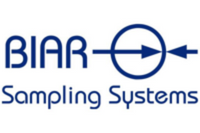Determining Hydrochloric Acid Strength
Hydrochloric Acid (HCl) is extremely corrosive with high toxicity and will react with hydroxides, amines, and alkalis. HCl is considered hazardous by the Occupational Health and Safety Administration (OSHA) Hazard Communication Standard (29 CFR 1910.1200), can cause severe skin burns and eye damage, and can be toxic if inhaled.
Why sample HCl?
- To monitor acid strength and weight to ensure conformance with specifications. Plants measure acid weight by using an auto titrator for adding water to sodium hydroxide (NaOH).
What to Look for in the Sample
- Free chlorine (i.e., the amount of chlorine that has yet to combine with chlorinated water to effectively sanitize contaminants), sulphates, heavy metals, and iron, as well as arsenic because it is toxic and a harmful additive.
How to Safely Take HCl Samples
- Aqueous samples may be taken using a bottle or other open-top receptacle. Anhydrous HCl is a gas and must be sampled in a closed container such as a REVO-BOX.
Hydrochloric Acid
1) Description
Name: ..............................................................................................Hydrochloric Acid
Chemical Formula: ........................................................................HCl
CAS No: ..........................................................................................7647-01-0
Other Names: ...............................................................................Hydrogen Chloride, Muriatic Acid
Uses: ...............................................................................................Industrial
Physical state: ..............................................................................HCl is hydrogen chloride gas dissolved in water
Color: ..............................................................................................Colorless
Odor: ...............................................................................................Pungent, irritating
Boiling Point: ................................................................................-85°C (-121°F)
Melting Point: ...............................................................................-114°C (-174°F)
Flash Point: ....................................................................................N/A
Flammability (liquid, gas): ..........................................................N/A
Vapor pressure: .............................................................................40.5 atm
2) Hazards
This material is considered hazardous by the OSHA Hazard Communication Standard (29 CFR 1910.1200).
H331: Toxic if inhaled.
Reactivity: Hydrochloric Acid is corrosive with most metals and will react with hydroxides, amines and alkalis.(NIOSH).
Specific Hazards related to Sampling: As HCl is extremely corrosive with a high toxicity, special care is needed when sampling. Suitable materials such as Monel or Hastelloy offer a higher corrosion resistance with PFA lined systems being a cheaper alternative. Sampling systems for HCl should ideally feature safety boxes that can be vented so that Operators are not exposed to toxic fumes.
_________

3) Sampling Facts
Acid strength: Plants need to monitor acid strength as they manufacture particular strengths for customers and also need specific acid strengths for their own chemical processes. Plants typically measure acid weight after adding water using sodium hydroxide with an auto titrator.
Free chlorine: Drops are put into a test tube and titrated. It is the free, uncombined form of chlorine that is effective for disinfection. Sulphates, Heavy Metals, Iron: Inductively coupled plasma mass spectrometry (ICP). Heavy Metals refer to metallic chemical elements that have a relatively high density and are toxic at low concentrations. Arsenic: This requires special equipment to conduct a Gutzeit test. It reacts arsenic gas with a hydrogen ion to create a yellow stain on mercuric chloride paper with reducing agents such as potassium iodide. Arsenic is toxic and cumulative in nature and as such is a toxic and harmful additive in the process.
4) Most common Sample Receptacles
HCl in its aqueous form is sampled into an open top receptacle like a bottle. Anhydrous (water-free) HCl is a gas and must be sampled into a closed container.


